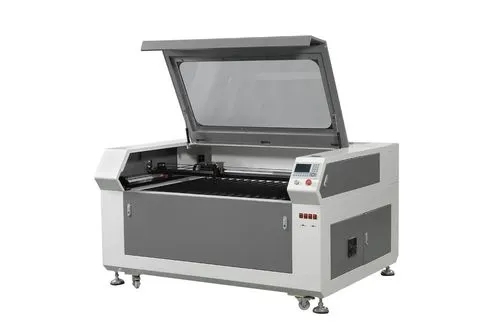What Causes the Pungent Odor from Laser Cutter Acrylic? A Malicious or Harmless Emission?
Introduction:
Laser cutting has become a popular technique for shaping materials efficiently and with precision. Acrylic, one of the commonly used materials, is known for its versatility and durability. However, when acrylic is cut with a laser cutter, a distinct pungent odor is often released, which raises concerns about the potential harm associated with this emission. In this article, we will delve into the causes of the pungent smell emitted during laser cutting of acrylic and evaluate whether it poses any malicious or harmless effects.
I. Understanding the Pungent Odor:
The distinct smell that arises during laser cutting of acrylic can be attributed to the chemical composition of the material and the specific process involved. Acrylic is a type of plastic derived from polymethyl methacrylate (PMMA), which contains carbon, hydrogen, and oxygen atoms. When acrylic is exposed to high heat generated by the laser beam during cutting, these chemical components undergo chemical reactions, leading to the release of different odor-emitting substances.
II. Chemical Reactions Causing Odor:
Several chemical reactions take place when acrylic is exposed to the intense heat initiated by a laser cutter. Heat affects the polymer structure of acrylic, leading to the release of volatile organic compounds (VOCs) and other toxic fumes. The pungent smell emitted can be attributed to certain compounds, such as formaldehyde, acetone, and other pyrolysis products. These compounds are known to have distinct odors and may have different impacts on human health.
III. Potential Health Implications:
The release of VOCs and other toxic fumes during laser cutting of acrylic raises concerns about potential health implications. Some of the compounds emitted, like formaldehyde, are known to be carcinogenic and can cause irritation to the respiratory system, eyes, and skin. Acute exposure to high concentrations of these substances can result in headaches, difficulty breathing, or even chemical burns. However, it is crucial to consider the level of exposure and the ventilation systems in place when assessing the risks associated with the pungent odor emitted from laser cutter acrylic.
IV. Ventilation and Safety Measures:
To address the concerns regarding the pungent odor and potential health effects, proper ventilation systems and safety measures are critical. Laser cutters should be operated in well-ventilated areas or equipped with exhaust systems to remove the emitted fumes. Personal protective equipment (PPE) such as gloves, goggles, and respiratory masks should be used to minimize direct exposure. Regular maintenance of the laser cutter, including cleaning and filter replacements, is essential to ensure the efficient removal of toxic fumes.
V. Harmless or Malicious Emission:
While the pungent odor emitted during laser cutting acrylic raises concerns about its potential harm, it is essential to consider the overall risk and exposure levels. When proper safety precautions and ventilation systems are in place, the emitted fumes can be effectively mitigated, minimizing any potential health risks for operators and individuals within the vicinity. Furthermore, the odor emitted during laser cutting of acrylic does not indicate a deliberate malicious emission but rather a consequence of the chemical reactions occurring.
FAQs:
1. Can the pungent odor from laser cutting acrylic be harmful?
– The pungent odor emitted during laser cutting of acrylic can potentially be harmful if exposure is prolonged and occurs in poorly ventilated areas. It is important to implement proper safety measures and ventilation systems to minimize risks.
2. Which chemical compounds are responsible for the pungent smell?
– Formaldehyde, acetone, and various pyrolysis products are the main chemical compounds responsible for the pungent smell emitted during laser cutting of acrylic.
3. Is the pungent odor from laser cutter acrylic intentional or malicious?
– The pungent odor emitted during laser cutting of acrylic is not intentional or malicious. It is a consequence of the chemical reactions that occur when acrylic is exposed to high heat generated by the laser cutter.
4. What safety measures should be taken when working with a laser cutter acrylic?
– Operators should ensure proper ventilation, use personal protective equipment (PPE) such as gloves, goggles, and respiratory masks, and regularly maintain and clean the laser cutter to minimize risks associated with the emitted fumes.
5. How can the pungent odor from laser cutting acrylic be minimized?
– Implementing proper ventilation systems, using exhaust fans, and ensuring a well-ventilated working environment can help minimize the pungent odor emitted during laser cutting of acrylic.
Conclusion:
The pungent odor emitted during laser cutting of acrylic is primarily caused by the release of volatile organic compounds (VOCs) and other toxic fumes resulting from chemical reactions between the acrylic and the laser beam’s heat. While certain compounds emitted can have potential health implications, the risks can be minimized through proper ventilation systems, safety measures, and regular maintenance of the laser cutter. It is crucial for operators to ensure they are working in well-ventilated areas and utilizing personal protective equipment (PPE) to reduce direct exposure. The pungent odor from laser cutter acrylic is a consequence of the process rather than a deliberate malicious emission.





